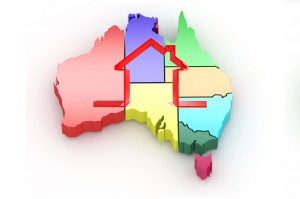House rents increase in most capitals
House rents are on the rise again with sharp increases reported over the December quarter spelling more bad news for tenants already struggling to secure affordable accommodation in tight rental markets.
Most capital cities recorded increases in house rents over the quarter with Hobart reporting the highest growth rate of 7.6 per cent to a new record high of $355 per week.
Canberra houses rents also surged over the December quarter rising by 5.3 per cent to $500 week – an annual increase of 7.5 per cent and the highest result of all the capitals.
No relief also for Sydney, Melbourne and Adelaide tenants with house rents up by 1.9 per cent, 2.5 per cent and 2.9 per cent respectively over the December quarter.
Brisbane and Darwin house rents however remained steady over the quarter, reflecting more tenant–friendly local market conditions.
Brisbane house rents have been steady for the past three years with Darwin rents falling by 3.5 per cent over 2016.
The Perth rental market continues to be a clear underperformer with house rents falling by 2.6 per cent over the quarter and down by 8.6 per cent over the past year.
Perth house rents at $370 per week are now at their lowest level in 7 years and, on current trends, are set to soon become the cheapest of all the capitals.
Sydney however remains clearly the most expensive capital for house rents at $540 per week and well ahead of Melbourne at $410 and Brisbane at $400.
Unit rental growth more subdued
Although house rents increased sharply over the December quarter, unit rent results were more subdued.
The tight rental markets of Hobart and Canberra continued to record rent increases – up by 5.1 per cent and 7.1 per cent respectively.
Darwin also recorded its first quarterly rent increase for units for more than three years – up by 3.5 per cent which follows 8 consecutive quarters of falls.
Sydney unit rents fell by 1.0 per cent over the quarter with Perth down again – falling by 6.3 per cent to be now down by 14.3 per cent over the past year – the highest annual decline in unit rents on record for the local market.
Despite falling over the December quarter, Sydney unit rents increased by 2.0 per cent over the past year and, at $520 per week, remain clearly the highest of the capitals and well ahead of the next highest Darwin at $440 and Canberra $420.
Rental yields rising
Rising house rents have translated into increased gross rental yields in Sydney, Melbourne, Adelaide and Canberra.
Increased gross yields for units also in those capitals however indicates weakness in prices growth.
Hobart is providing the highest gross yields for houses at 5.53 per cent and also for units at 5.75 per cent – just ahead of Canberra at 5.75 per cent.
Low vacancy rates tighten
Rental results for the December quarter clearly reflect the underlying supply and demand dynamics of local markets.
Latest vacancy rate data for December, although impacted by the usual end of year seasonal factors, reports a continuing clear disparity in outcomes between the capitals.
House rental markets in Sydney, Melbourne, Adelaide, Hobart and Canberra remain tight with vacancy rates of 2.1 per cent, 1.4 per cent, 1.8 per cent, 0.6 per cent and 1.0 per cent respectively.
With the exception of Sydney, vacancy rates for all these capitals are now lower than those recorded over December 2015.
Rental markets in Perth, Brisbane and Darwin continue to offer more choice for tenants with December house vacancy rates of 3.0 per cent, 4.1 percent and 2.5 per cent respectively.
Although rental vacancy rates for units are generally higher than houses, capital city comparisons reflect similar outcomes.
Sydney, Melbourne, Adelaide, Hobart and Canberra remain relatively tight with Brisbane, Perth and Darwin continuing to record significantly higher vacancy rates than the other capitals.
Rental market outlook still generally tough for tenants but positive for investors
Most capital city rental markets generally remain highly-competitive for tenants with tight vacancy rates and likely continued upward pressure on rents.
Despite the lowest incomes growth on record, rents in some capitals continue to rise at a faster rate than wages which can only diminish rental affordability and increase rental stress.
Record levels of new dwelling construction and surging investor activity in Sydney and Melbourne have as yet failed to ease imbalances in these markets.
Increased supply is being offset by strong demand generated from high levels of migration and relatively low numbers of first home buyers.
The resource capitals of Perth and Darwin however remain clear exceptions with high vacancy rates and rents continuing to fall, although the Darwin house rental market is showing early signs of stabilising.
The Brisbane property market continues to improve for tenants with vacancy rates for both houses and units rising and reflecting recent record new home construction – particularly units, rising first home buyer activity and relatively low levels of migration.
Although rents in Brisbane have remained steady for the past three years, rising vacancy rates will continue to put downward pressure on growth.
Higher rents and flatter prices growth have acted to push up gross rental yields in some markets which will provide an incentive for investors.
The outlook for yields however remains relatively stable with prices and rents set to generally track each other.
from Property UpdateProperty Update http://propertyupdate.com.au/rocketing-rents-spell-more-bad-news-for-tenants/






No comments:
Post a Comment